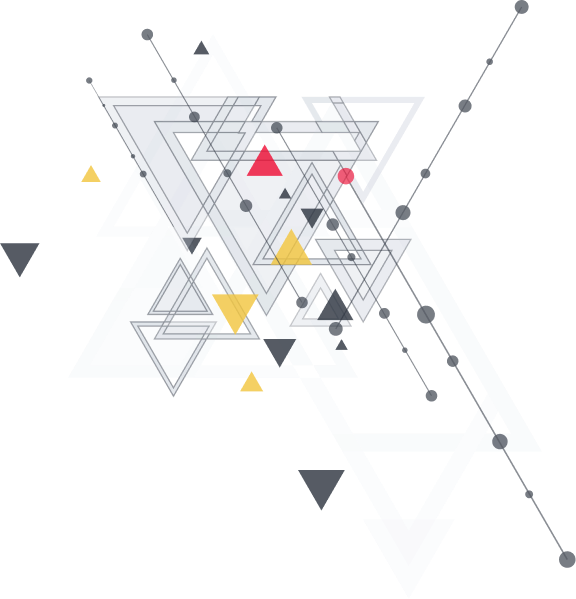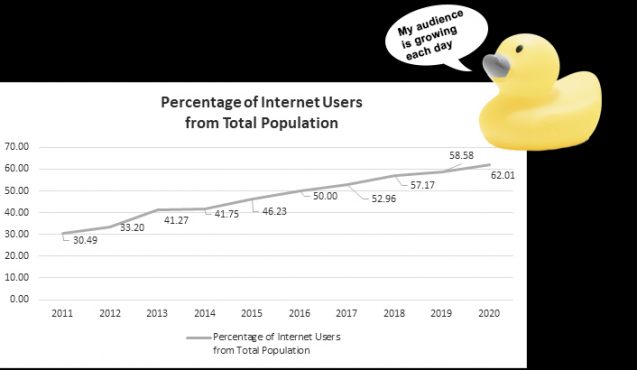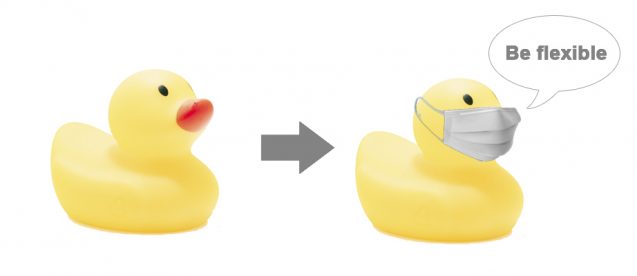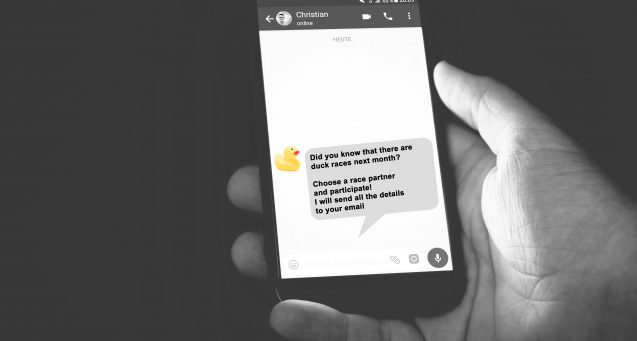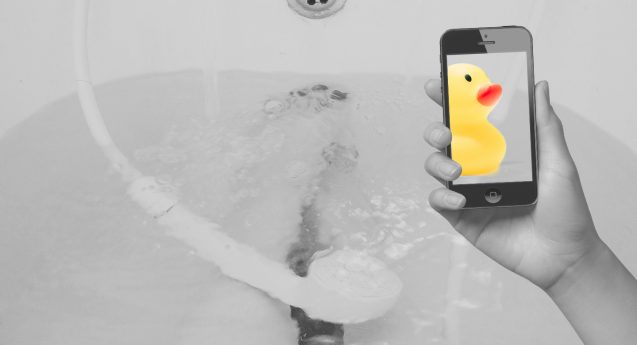A man with a case standing behind a door is hopeless but keeps knocking. In his suitcase, a client brave enough to open could find all kinds of vital stuff, from a toe massager to bath duckies. The first big step towards digitalization has been selling the same duckies through TV and radio. A fateful moment for B2C sales was of course the mass adoption of the internet, followed by emerging global e-stores and general sales processes digitalization.
Our lucky ducky, whose sales rates in the early 70s depended on how skilled the salesperson was, now enters a global market with just one click. Opening an e-shop makes your products available to 4,54 billion people worldwide. This is the number of Internet users in 2020. The trend is increasing.
An online store with a well-developed CRM system allows you to collect all the crucial data around your clients, gather core sales analytics in several seconds and adjust your marketing strategy to the fast-changing market conditions.
A company and products that one can’t find online are not trustworthy. This is the overall summary of the last decade. The coronavirus (sorry, we know you are tired of this word) added as much fuel to this digitalization fire as nothing before it. The “untrustworthy” turned into “not-accessible”.
In the upcoming series of articles, we’ll review the main and upcoming trends of B2C digital tools.
Trend 1: Smart and Talky AI-Powered Chatbots
A chatbot, if well-developed, solves the basic business challenge of how to consult and sell to clients 24/7 worldwide without hiring more employees with foreign language skills (read, with higher salary expectations).
A chatbot can give primary information to the client based on the keywords and even offer some solutions or products without connecting to a salesperson at all. It can even joke or ask some personalized questions based on the returning customer data. Kind of the Turing test in commercial use, isn’t it?
Some good chat examples:
- Domino’s chatbot uses and reacts to stickers and emojis, and works with voice messages.
- National Geographic chose Einstein as a chatbot hero and all the scenarios are written with a fine sense of humor in Einstein’s tone of voice.
- Lidl’s Market bot that specializes in wine checks its availability for the customer and even advises on good dinner-wine matches.
What connects these three? Feelings and usefulness. What awakes emotions is memorable. Unfortunately, bad events and negative emotions stay longer than positive ones, so be careful when writing scenarios for your chatbots. Think twice when using ambiguous jokes or fraternizing appeals, keep in mind your company image and communication strategy.
Here some chatbot-inspiring statistics and forecasts:
 So, don’t forget to create a chatbot on your selling page or a helping chatbot app. At least, if you don’t want a heartless robot to speak to your clients, provide the chatbot with some basic information, the link to FAQs, or sales. Create a place, where a client can leave some concerns or questions, that your human staff will answer during the workday. If you have some concerns or looking for a team to implement all your ideas, here are some examples of similar projects we delivered.
So, don’t forget to create a chatbot on your selling page or a helping chatbot app. At least, if you don’t want a heartless robot to speak to your clients, provide the chatbot with some basic information, the link to FAQs, or sales. Create a place, where a client can leave some concerns or questions, that your human staff will answer during the workday. If you have some concerns or looking for a team to implement all your ideas, here are some examples of similar projects we delivered.
Where to find more useful information on chatbots
- AI-based chatbots in customer service and their effects on user compliance
- Technology in Society: Understanding the attitude and intention to use smartphone chatbots for shopping
- Computers in Human Behavior: Making conversations with chatbots more personalized
- User Experiences of Social Support From Companion Chatbots in Everyday Contexts: Thematic Analysis
Trend 2: Gamification
Gamification is described mostly as the usage of game design logic and mechanics in non-game contexts. A British programmer and video game designer Nick Pelling used this term for the first time in 2002. But behavioral psychologists have been learning peoples’ actions and reactions in the frame of game environment long before: what motivates them, influences their effectiveness, etc.
What’s the difference?
Gamification is a psychology- and game-design-based branch. It is used as a helping tool in education, sales, medicine, etc. Special attention is often paid to the visual elements.
To list and describe all the gamification principles, a bookshelf would not be enough. But if to reduce all of them to the two basic principles, these would-be motivation and reward. In game design, it is called the core loop, the heart of the game, what players do and what they get as a reward. You’ve never seen a game where you would get nothing, no points, badges, levels, etc., have you? We play to win and to make our brains happy.
Motivation: write a review for our ducky, download a funny photo with it and get a unique ducky from New Zealand for free.
Reward: yellow ducky.
Plus, often one more gamification principle is mentioned – status. For example, write reviews for 10 yellow duckies from 10 different producers and become the best ducky expert of Amazon store.
Our dopamine system loves rewards, and social acknowledgment can be even more precious for us than a real bonus. The most complicated point here is to find the right motivation and the adequate reward, which is relevant for the customer.
For example, offering to write a review for a client who has been with Amazon for 4 years and didn’t leave a word, will most likely be pointless. The key audience here is people who write more or less regularly and can be easier engaged.
Motivation with charitable causes and social engagement can work better.
For example: Buy 10 yellow duckies, and 1 cent from each ducky will go to the World Organization for Birds Protection. You can try to make this visually engaging, for example, set a counter for each client in the personal cabinet where he could see the common progress, or make the results shareable on social media. Why does this work? Status. Everyone likes to be a good guy. You don’t buy rubber duckies ― you save birds’ lives.
Don’t forget about basic visual and content principles of gamification:
- Good story and engaging messages
- Clear, not overloaded design
- Step by step gamer development with increasing complexity
- Resources should be exhaustible but replenishable (good point for motivation)
- The game should evoke positive emotions
Some gamification examples in sales
The E-commerce giant has gamified its app literally and included numerous games where the user earns coins (AliExpress currency) that can be exchanged to coupons and real items. The number of coins daily is limited, so the user has to enter the game daily.
Coffee ruler turned its app into the coffee-reward game. Gold member card, free drinks and birthday presents, competitions, preferences saved in the CRM system so no more dull questions like “what’s your name/with milk / with sugar, etc.”.
Beauty product producer has launched an extra landing page, where the user can play retro-style mini-games “Beauty Bounce”, “Smooth Satisfaction”, “Repair Racer” and “Serum Quest”. The games take customers into the rejuvenation process through skincare and introduce the new product at the same time.
Gamification isn’t a novelty: interactive marketing campaigns, branded games, and quizzes existed long before 2002, but gamification is now taking over all spheres of our lives: education, personal life (hello, Tinder), and of course business. So, consider the possibility to make your website or app more engaging, and products more desirable. Any of your ideas can be embodied by our team.
A candy company created something close to its own CandyGo. The buyer scans a code on a product and enters PEZ World: with interactive characters, minigames, and challenges. Six different Candy Codes are randomly spread among packs of PEZ, ensuring players will have to buy more and more PEZ to get the full entrance.
Where to find more information on gamification in e-commerce
- Digital Innovations for Customer Engagement, Management, and Organizational Improvement
- Actionable Gamification: Beyond Points, Badges, and Leaderboards
- From Players to Citizens: Gamification in the E-commerce Context
Trend 3: AR Technologies
AR isn’t the new guy on the digital playground ― the technology turns 30 next year. But before 2020, when it came to sales, it was more of a funny tool often associated with IKEA and seen as an interactive game.
Сoronavirus, lockdown, closed showrooms, and shopping centers. The funny tool turned into one of the rare options left that allow you to assess how good this yellow ducky suits your black bathroom before buying it.
Augmented reality turns on one more interesting psychological effect – a sense of ownership. Once your customer has seen this yellow cute dude in his bathroom, he will buy it faster than if he just read or heard about it.
Big marketplaces such as Home Depot, Wayfair, Etsy (still beta version) already introduced AR techs in their apps, feeling the increasing trend of remote full-cycle selling. In other words, when the pandemic ends, we will still be searching, finding, trying, and ordering stuff without leaving home. Augmented reality turns into actuality.
One more point – as this technology is not used widely by each smartphone owner, it still feels like a game, and games are good, see point 2.
Here some updated AR statistics and forecasts:
 Several more ideas on how to use AR in e-commerce
Several more ideas on how to use AR in e-commerce
- A product demonstration can be cleverly mixed with related product offers
- Manuals or instructions on best practices on how to use the product
- Make photos or videos with AR product shareable
Some examples of AR usage in e-commerce
Amazon launched Amazon AR view in 2017. The app similar to IKEA offers a preview of furniture, toys, design items, etc. Last year one more feature was added- a client can place multiple items so he or she can see how they look together, compare and choose.
2019 Gucci announced an AR feature to its app that lets users try on sneakers virtually. The app also allows taking photos, which the user can save, resend or share on social media.
Conclusion for the first part
Autonomous, engaging, quick. These are the features that chatbots, AR, and gamification add to your business. In the next article, we will go through voice and payment tools and give some advice on how to automate your social e-commerce. Stay tuned.
Related Case Studies:
Retail Investors Platform Development
Matchmaking Platform for Artisan Retailers in Germany





